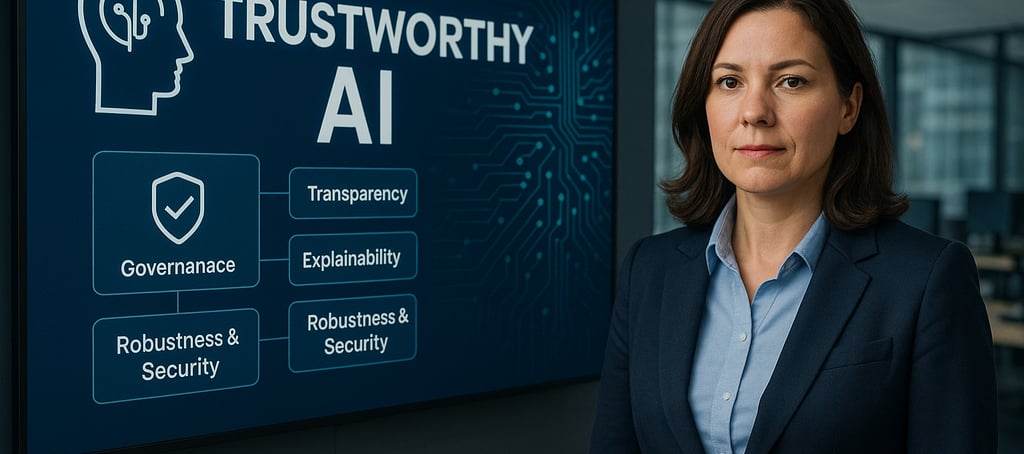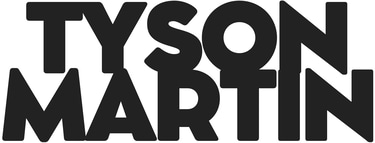Building Trustworthy AI: A Strategic Imperative for Global-Scale Platforms
Artificial intelligence is transforming business at an unprecedented pace, and nowhere is the impact more profound than in digital consumer-facing organizations operating across continents. For Chief Information Security Officers (CISOs) responsible for global infrastructure, the AI revolution presents a unique blend of opportunity and risk. As AI technologies become more embedded in product ecosystems, cloud environments, and customer experiences, so too must security strategies evolve to ensure trust is never compromised.


Building Trustworthy AI: A Strategic Imperative for Global-Scale Platforms
Artificial intelligence is transforming business at an unprecedented pace, and nowhere is the impact more profound than in digital consumer-facing organizations operating across continents. For Chief Information Security Officers (CISOs) responsible for global infrastructure, the AI revolution presents a unique blend of opportunity and risk. As AI technologies become more embedded in product ecosystems, cloud environments, and customer experiences, so too must security strategies evolve to ensure trust is never compromised.
That evolution took a major leap forward with the recent release of the Cloud Security Alliance's AI Controls Matrix (AICM)—a comprehensive, vendor-neutral framework designed to help organizations operationalize trustworthy AI. For CISOs tasked with protecting expansive, cloud-native digital environments while enabling innovation, the AICM delivers not just a blueprint but a mandate.
The New Mandate: Responsible AI at Scale
Unlike traditional security challenges, AI risk isn’t confined to code vulnerabilities or cloud misconfigurations. It stems from opaque model logic, data integrity threats, adversarial inputs, biased algorithms, and evolving regulatory expectations. The AICM addresses these challenges head-on with 243 granular control objectives across 18 domains—each aimed at aligning AI implementation with enterprise risk management, compliance, and trust.
For example, one domain focuses on model transparency and documentation, requiring clear explanations of AI decision-making processes. Another outlines robust human oversight procedures to ensure critical decisions aren't fully automated. Together, these controls translate AI ethics into action.
A Framework Grounded in Real-World Practice
Unlike aspirational guidelines, the AICM is grounded in implementation. It builds on the CSA’s established Cloud Controls Matrix and aligns with global standards including ISO 27001, ISO 42001 (AI management), NIST AI RMF, and the EU AI Act. This mapping allows CISOs to fold AI-specific controls into existing compliance architectures and internal audit frameworks.
In practical terms, the AICM becomes a risk-aligned roadmap. It guides security teams through key decision points, such as:
How should access to AI training data be governed?
What logging standards apply to inference pipelines?
How can teams validate the security of open-source models?
Rather than starting from scratch, CISOs can use the AICM to enhance existing governance, clarify ownership, and define scalable policies that resonate with engineering, legal, and product stakeholders alike.
Embedding Security from Ideation to Deployment
For organizations developing immersive digital experiences and intelligent platforms, AI models are no longer confined to back-end analytics. They power personalization engines, automate content moderation, assist in language localization, and interpret customer sentiment in real time. In these settings, the need for secure-by-design AI becomes urgent.
The AICM equips CISOs to:
Integrate threat modeling into AI development pipelines
Conduct adversarial testing on models pre-deployment
Define security SLAs for third-party AI providers
Establish audit trails for model retraining events
Crucially, these actions don’t require security leaders to become data scientists. Instead, they enable CISOs to lead cross-functional collaboration by bringing structured risk intelligence into AI design conversations. This shift—from reactive oversight to proactive co-creation—is the hallmark of security leadership in the AI era.
Governance that Builds Confidence, Internally and Externally
With regulatory bodies, investors, and consumers all paying closer attention to AI, transparency is fast becoming a strategic differentiator. The AICM promotes this by embedding governance across every stage of the AI lifecycle:
Policy Design: Define how AI is procured, developed, or integrated across business units.
Risk Classification: Assess and label models based on potential societal, legal, and operational impacts.
Accountability: Assign named roles for AI owners, reviewers, and response teams.
Monitoring: Track and measure risk metrics post-deployment.
Such rigor does more than check compliance boxes. It demonstrates internal control maturity to boards, external assessors, and regulatory agencies. For CISOs tasked with enabling product-led growth in regulated markets, that assurance is invaluable.
From Abstract to Actionable: Security as an Enabler
The value of the AICM lies in its clarity. It does not rely on vague notions of trust or safety. Instead, it offers measurable, auditable, and actionable controls that CISOs can integrate into their strategic programs. Security is no longer positioned as a blocker but as a catalyst for AI readiness.
This proactive stance aligns perfectly with the modern CISO role: building trust across ecosystems, ensuring digital resilience, and partnering with engineering and product to embed security at the speed of innovation. Whether evaluating a new AI feature or preparing for external certification, the AICM provides a shared language that elevates security into the AI conversation.
Preparing for Tomorrow: Certification and Beyond
Looking ahead, organizations embracing the AICM will be better positioned for forthcoming AI assurance standards and certification schemes. As governing bodies establish clearer requirements for AI transparency, ethics, and safety, having a controls-based architecture in place will enable faster adaptation and leadership in compliance.
Moreover, the AICM sets the stage for internal maturity assessments. CISOs can measure current gaps, prioritize control adoption based on risk appetite, and report progress using standardized metrics. This data-driven approach strengthens strategic alignment with the C-suite and fosters a culture of continuous improvement.
Conclusion: Lead with Controls, Deliver with Confidence
AI is no longer a future frontier—it is embedded in the present-day fabric of customer experience, operations, and innovation. For CISOs operating at scale, the call to action is clear: don’t wait for risk to materialize. Act now, with a structured plan grounded in the AI Controls Matrix.
By adopting the AICM as a strategic enabler, security leaders can build AI systems that are not only powerful but principled. They can bridge the gap between ambition and assurance. And most importantly, they can position their organizations to lead in a world where digital trust defines competitive advantage.
Take the first step: Explore the AI Controls Matrix today and start mapping your security posture to a future where trust is engineered, not assumed. For strategic guidance on AI governance, visit tysonmartin.com and connect with peers leading the way in security leadership.
